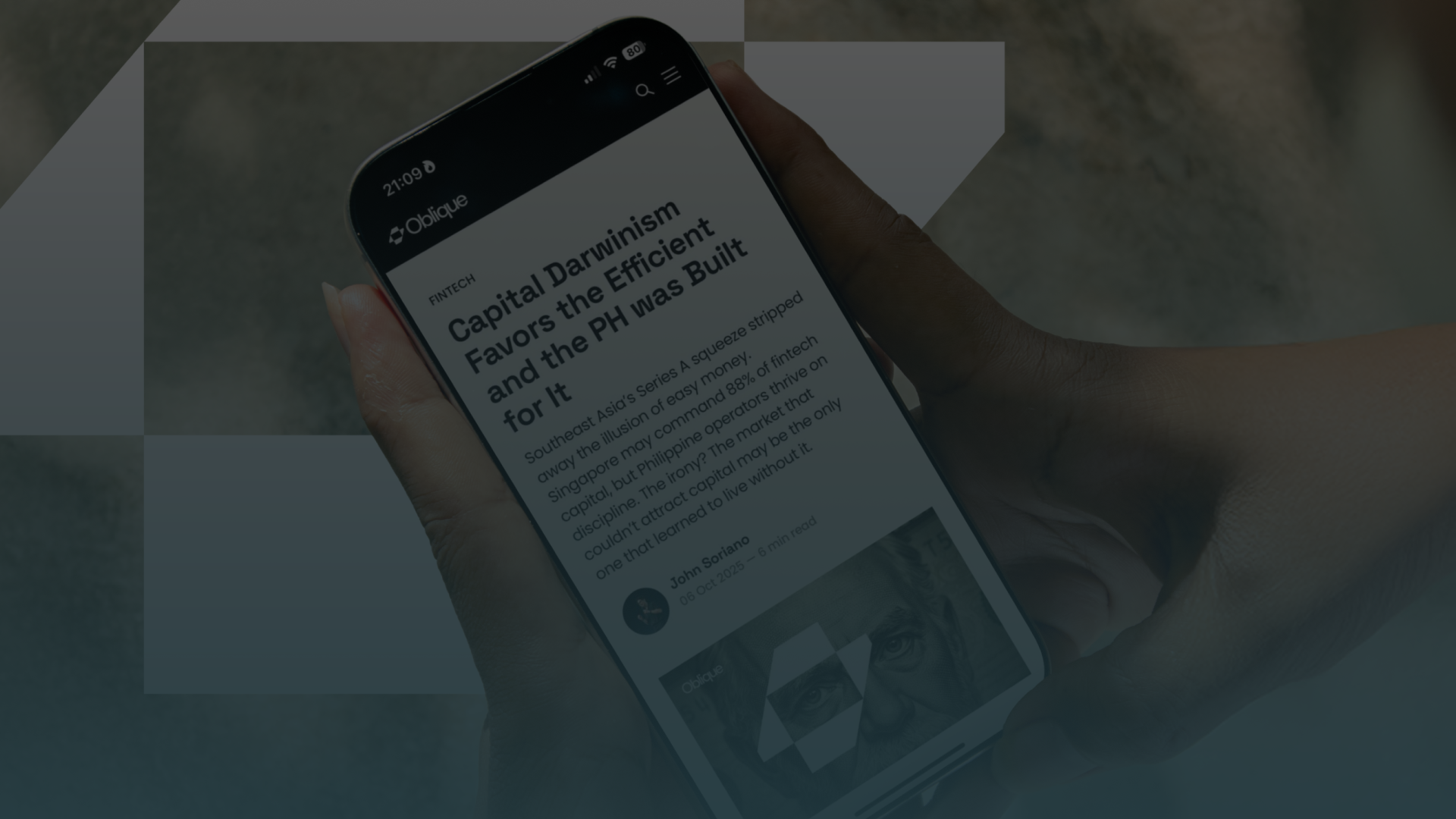
The Capital Deployment Problem in Southeast Asia
Founders in Southeast Asia know the math of dilution, but the ecosystem’s incentives push them to behave as if the math doesn’t matter.


Founders in Southeast Asia know the math of dilution, but the ecosystem’s incentives push them to behave as if the math doesn’t matter.

The founders who win aren’t the ones who raise the biggest checks—they’re the ones who know exactly what game they’re playing and have the courage to run it on their own terms.

Japan's startup ecosystem is learning to innovate the way Japan has always excelled: through discipline, precision, and the patient accumulation of small improvements that compound into transformation.

Jack Zhang turned a coffee shop headache into a $1B fintech. Here's what SEA founders can learn from the playbook he wrote—and how to adapt it for our fragmented reality.

Founders in Southeast Asia know the math of dilution, but the ecosystem’s incentives push them to behave as if the math doesn’t matter.

Grab’s Web3 payments push, Google Pay’s PH debut, and SEA’s $300B+ digital economy headline a week of bold moves, game-changing regulation, and deep tech bets shaping the region’s future.

Integration expands digital wallet options as Philippines accelerates toward mobile-first commerce

Southeast Asia’s tech scene this week saw major consolidation moves, breakthrough digital infrastructure, and bold pivots in AI and payments—revealing an ecosystem where operational scale and regional specialization increasingly outpace old-school growth and VC narratives.

The founders who win aren’t the ones who raise the biggest checks—they’re the ones who know exactly what game they’re playing and have the courage to run it on their own terms.

Japan's startup ecosystem is learning to innovate the way Japan has always excelled: through discipline, precision, and the patient accumulation of small improvements that compound into transformation.

Jack Zhang turned a coffee shop headache into a $1B fintech. Here's what SEA founders can learn from the playbook he wrote—and how to adapt it for our fragmented reality.

Scarcity doesn’t hold Southeast Asian founders back—it sharpens their edge. In Manila’s pressure cooker, ambition thrives where patient capital is rare, challenging Silicon Valley’s playbook with hard-won resilience.

Technology makes content creation effortless, but widens the taste gap between what we produce and what truly matters. Excellence requires craft.

When a Euronext-listed holding company writes an undisclosed check for a meme factory, it's not buying jokes—it's buying the blueprint for how marketing works when platforms automate agencies out of existence.

Southeast Asia’s digital economy is undergoing a strategic transformation, with capital and regulatory power moves laying the foundation for the next decade. This month’s digest reveals how disciplined investment, infrastructure buildout, and policy clarity are reshaping the region’s future.

Southeast Asia's future will be scripted by young builders who learn to navigate uncertainty, build from scratch, and iterate through failure. The organizations teaching them how to do that, at scale, are the region's most undervalued backbone.